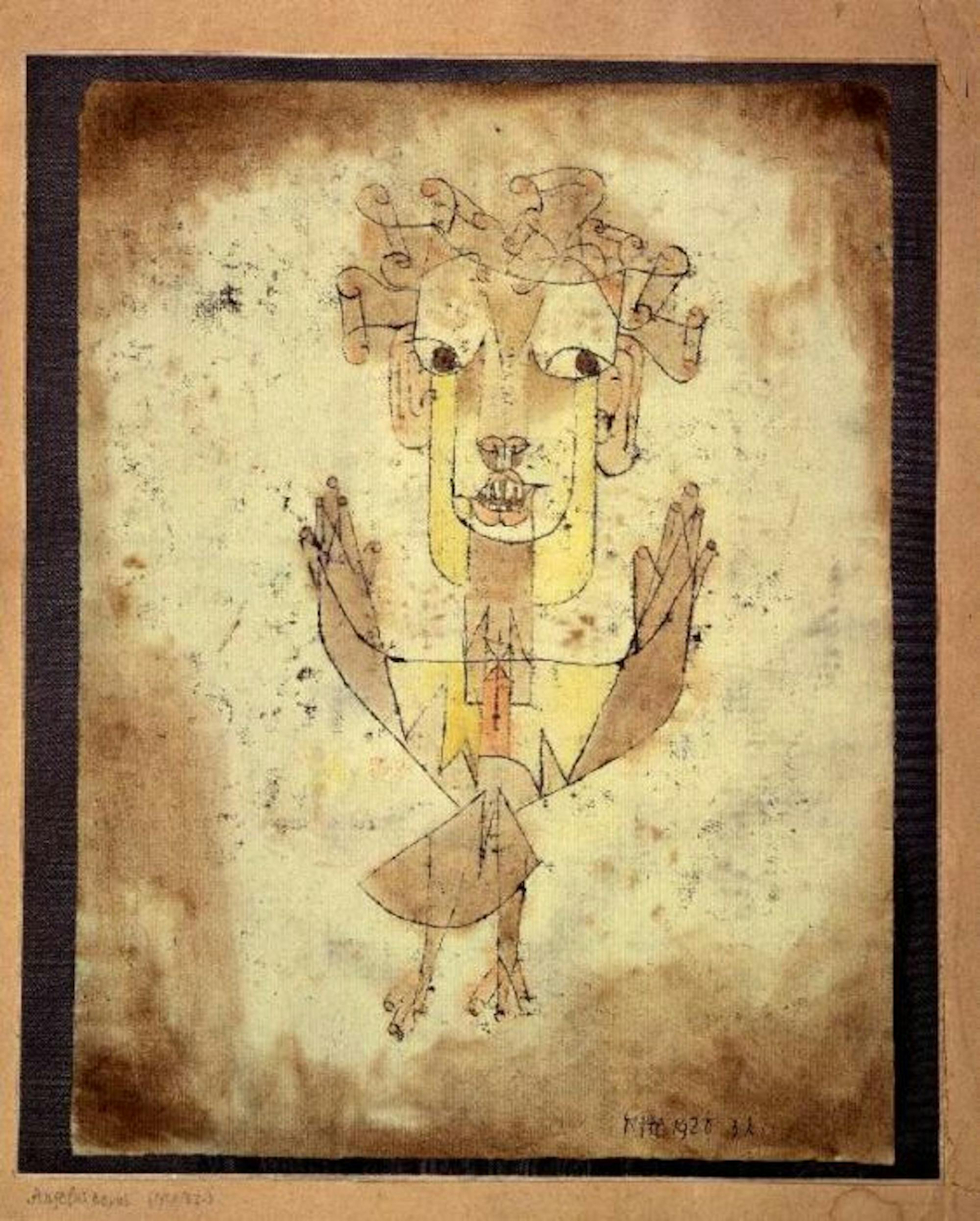In my very first college class, my professor showed us the following monoprint, titled“Angelus Novus” by Paul Klee:
It’s not exactly a looker.
However, this objectively ugly image hides a beautiful truth, as my professor showed in this interpretation from the philosopher Walter Benjamin:
“A Klee painting named ‘Angelus Novus’ shows an angel looking as though he is about to move away from something he is fixedly contemplating ... His face is turned toward the past ... The storm irresistibly propels him into the future to which his back is turned, while the pile of debris before him grows skyward. This storm is what we call progress.”
I’m not sure how Benjamin got all that from what I would describe as a deranged turkey with bleached mutton chops, a face reminiscent of Tilda Swinton and a mop of hair like Zach Galifianakis in “The Hangover.”
But I was struck by this description of the mutant bird as moving backward through time. Now, as I reflect on my college experience and on the years to come, my mind keeps returning to that first class and the profound insight that “Angelus Novus” illuminated: the future is behind us.
In the English language, we perceive the past and the future as backward and forward, behind us and in front of us. We praise innovative or futuristic ideas as “forward thinking.” We use the #ThrowbackThursday when posting a sentimental picture on social media.
We take such a view of the world for granted. Indeed, this “future is in front, past is behind” idea is not just an English thing: It’s baked into almost every human language.
Almost every language. A 2005 paper by Rafael Nunez and Eve Sweetser outlined the first known exception: Aymara, an indigenous language spoken by a couple million people around Bolivia, Peru and Chile.
As Nunez and Sweetser describe, the Aymara word for “time” is pacha. The word nayra refers to “front,” as in things that are physically in front of the speaker. Combine these two words and the outcome is the opposite of what we would expect.Nayra pacha literally means “front time” but is used to refer to a time in the past. The word qhipa means “back” or “behind,” but qhipa pacha — literally “back time” — denotes a future time.
This is not just a linguistic quirk. Language determines the way the Aymara understands time and space. When speaking about a future event, an Aymara will jerk their thumb over their shoulder, as we would when referring to a past event. And when an Aymara speaks of something that already happened, they point their index finger out in front, as we might do in referencing something to come.
As for why the Aymara speak and think this way, Nunez and Sweetser argue that “part of the answer comes from the strong emphasis Aymara puts on visual perception as a source of knowledge.”
If seeing is believing or knowing, then it makes sense to refer to the past as in front of us. Things that have already happened are available for us to look at and understand. The future, however, is unknown and is, therefore, best conceptualized as behind us, away from our source of vision and knowledge.
If I haven’t completely lost you, you may be wondering what we should make of all this.
I think “Angelus Novus” and Aymara act as enlightening challenges to our conceptions of time and space, and this can be especially impactful at momentous occasions like graduations.
Graduating from college is arguably the most significant transition we have ever had to make. For almost our entire lives, we have been students, with our existence structured and largely predetermined by the predictable progression of bell schedules, semesters, summer breaks and grade levels.
Now, most of us are leaving school and entering the “adult” phase of our lives, a confoundingly nebulous epoch with limitless possibilities, but also innumerable responsibilities, that will last until we expire. I can safely say that many of us feel significant anxiety over the future. What is my purpose in life? Will I find a husband or wife? Will AI replace me in five years and/or eradicate the human race?
Such uncertainty seems frustrating or confusing if we employ the default future-in-front-of-us lens. If we have our whole life ahead of us, shouldn’t we be able to see it more clearly?
If instead, we think of the future as behind us, uncertainty becomes natural or inevitable. Rather than worrying about the unknowable and uncontrollable, we focus on what we can know and can control.
Spoken like a true history major, I believe we can and should learn from our past. While we shouldn’t extrapolate, overgeneralize or become preoccupied with the past, history offers abundant lessons for our personal lives and for the world.
But most importantly, we should live in the present, control what we can control and give our full attention and presence to whatever or whoever is in our midst. As Colorado football coach Deion Sanders recently said: “Take care yo’ now … Yesterday can’t cripple you and tomorrow can’t place fear in you. Now is what you got.”
(I should note that 47 of Sanders’ players have entered the transfer portal since he said that, so I guess his message didn’t really work. Let’s ignore that, though and take Coach Prime’s quote at face value for our purposes here.)
I don’t know what the future holds, but I am confident that we have to accept life’s uncertainty. And I believe that if we can learn from the past while living in the present, we’ll walk backward, propelled by “the storm we call progress,” into a future of great possibilities.
The future is behind us
Paul Klee, CC BY-SA 3.0 , via Wikimedia Commons
The views expressed in this column are those of the author and not necessarily those of The Observer.









